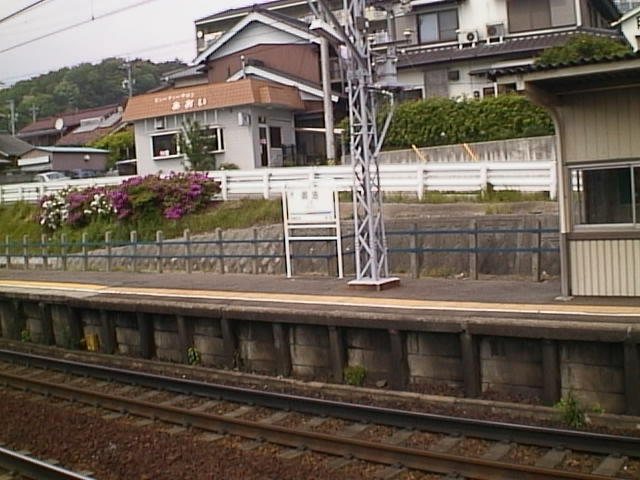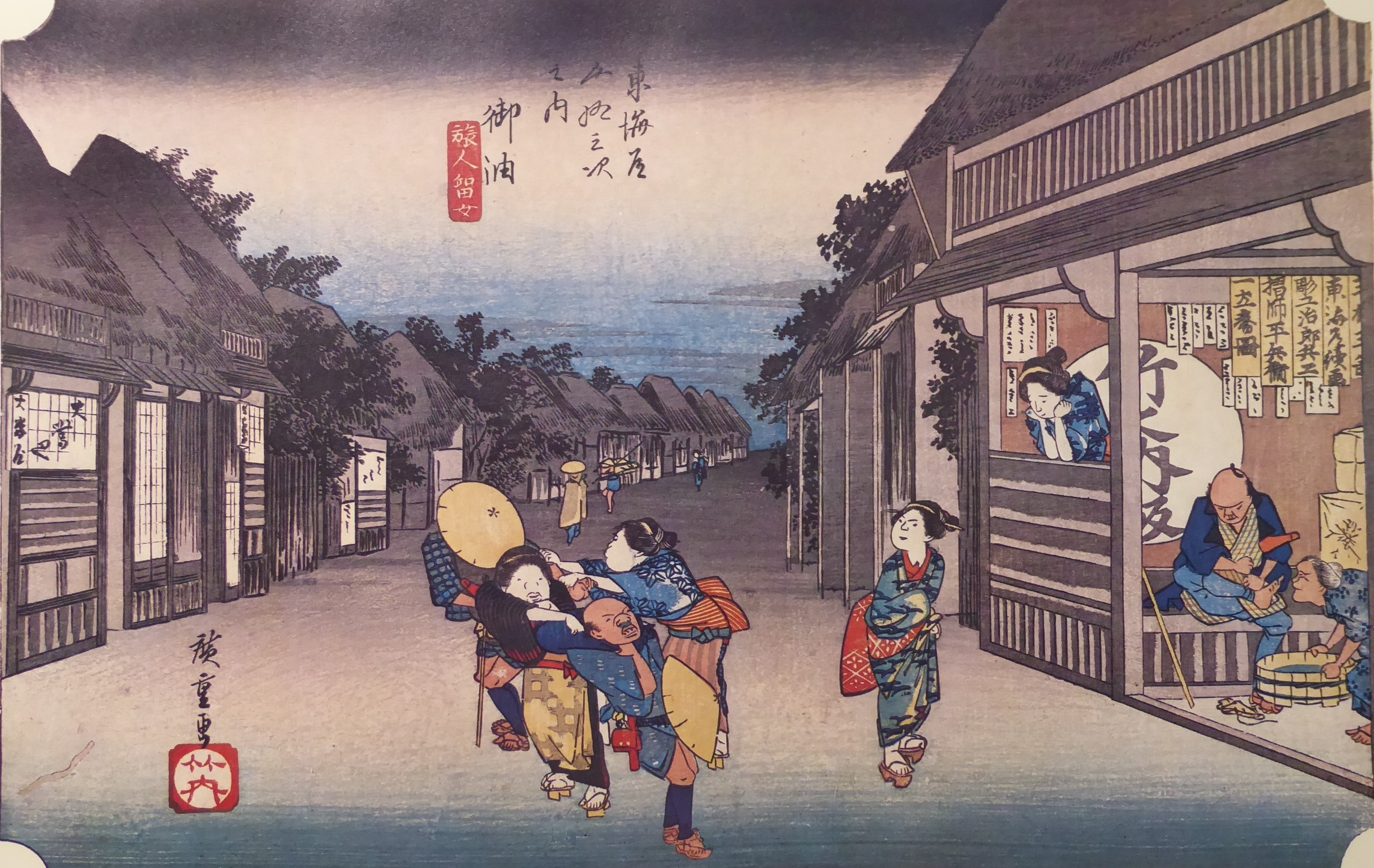Explanation of the Fifty-three Stations of the Tokaido 36 Goyu
1.7km from Akasaka to Goyu 34°50’42″N 137°19’02″E
Goyu is the 35th post station of the Fifty-three Stations of the Tokaido.
It has become a tourist destination due to the beautiful rows of pine trees that still retain the appearance of the highway.
There is an oiwake to the east of Goyu, which is the western starting point of the Hime Highway.
The Hime Highway often took the Hime Highway north of Lake Hamana from the Tokaido to avoid the strict “Arai” post station where women were appraised.
At its peak, Goyu had four honjin inns. At its lowest, it had two.
The Hime Highway is a 60km road that connects Mitsuke and Goyu via Honzaka Pass on the north side of Lake Hamana.
In the old days, it was the main road of the Tokaido and was called Futami no Michi.
After the Middle Ages, as traffic along the southern shore of Lake Hamana became more frequent, the number of people traveling long distances decreased.
Because it passed through Honzaka Pass, it was called Honzakagoe, Honzaka-dori, Honzaka-michi, and Honzaka-kaido.
During the Sengoku period, the road was developed, and in the Edo period, it was considered an auxiliary road to the Tokaido and lodgings were built on it.
The name Hime-kaido became established around the end of the Edo period, and after the Meiji period, a new road was built, Honzaka Pass was replaced by a tunnel, and the road over the pass was abandoned.
A cat with a short tail, as described in the Edo History of Customs, was called Goyu cat and became popular.
It was brought from Goyu, and was named after the short length of the post station between Goyu and Akasaka, which resembled a tail.
After the Meiji Restoration, the Hōrai County Office was established here, and it became the center of the county.
Because it was not selected as a stop on the Tokaido Main Line, its prosperity was taken over by Mitsu and Gamagori, which were connected by rail after the railway opened.
Later, when the Meitetsu Nagoya Main Line opened, Hon-Goyu Station was opened.
Because express trains did not stop there, the prosperity of the area before the Meiji Restoration could not be restored.
The county office and police station were moved from Goyu to Kokufu.
In 1959, Goyu Town, Hōi County, was merged with Toyokawa City.
It is currently located in Goyu Town, Toyokawa City, Aichi Prefecture.
① “Hoeido version”
This depicts a woman working at an inn, called a “tome-onna,” forcibly dragging travelers into the inn.
At dusk, the women known as “tome-onna” actively solicit customers for the inn at Goyu.
The scene in the painting was not exaggerated.
In “Tokaidochu Hizakurige,” it is written, “The tome-onna who come out from both sides, both of them painted as if they were wearing noodles…” This is a depiction of that exact scene.
The man in the foreground is struggling as his furoshiki is pulled.
The man in the back is also confused as his sleeve is pulled.
The inside of the inn on the right is a scene that has been abandoned by the woman who stayed behind.
An old woman is seen offering a basin for washing the feet of a traveler as he takes off his straw sandals.
②Gyousyo version
The content is the same as the Hoeido version.
The act of soliciting is depicted in detail.
There is no interesting depiction of the soliciting as in the Hoeido version.
The publisher’s name “Yamadaya” is written on the wall of the inn.
③ “Reisho version”
A large willow tree on the road and the back of a traveler are depicted.
In this composition, the road seems narrow and poorly maintained.
④ “Hokusai version”
A traveler is depicted resting in front of a Goshinto and another traveler carrying luggage.
Goushinto towers are a teaching of Taoism that says that if a person falls asleep on the night of the day of the monkey, a bug called the sanshi that lives inside the body will rise to the sky.
This involves reporting a person’s daily actions to the Heavenly Emperor.
It was said that depending on the crime, one’s lifespan could be shortened.
It would be terrible if one’s lifespan were shortened, so on this day people would be cautious and stay up all night to prevent insects from escaping.
It seems that this was already popular in Japan around the 10th century.
As this teaching spread, it was joined by Buddhism and the beliefs of the common people.
It became very popular in rural areas throughout the country during the Edo period.
⑤ “Travel Image”
This is Meiden Goyu Station.
⑥ “Stamp Image”
Meiden Goyu Station is an unmanned station and does not have a ticket vending machine.
Hoeido version
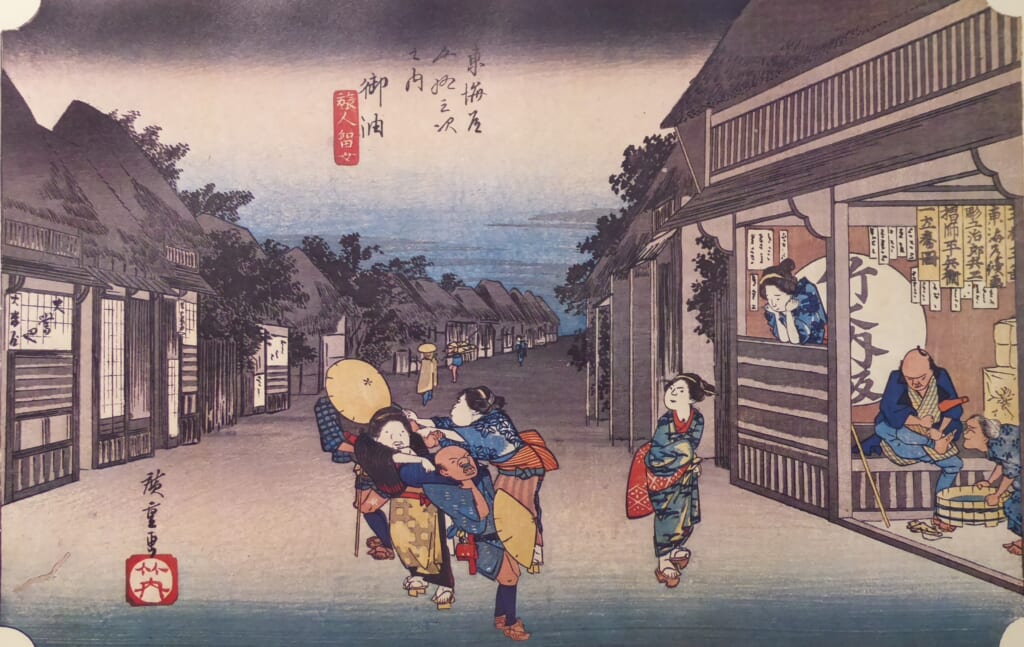
Reisho version
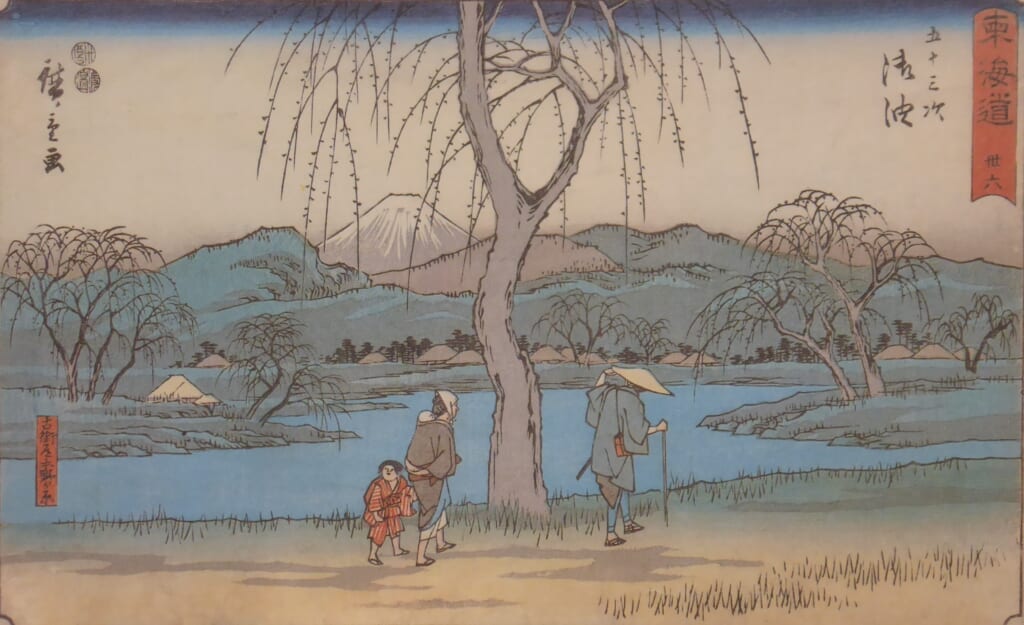
Hokusai version
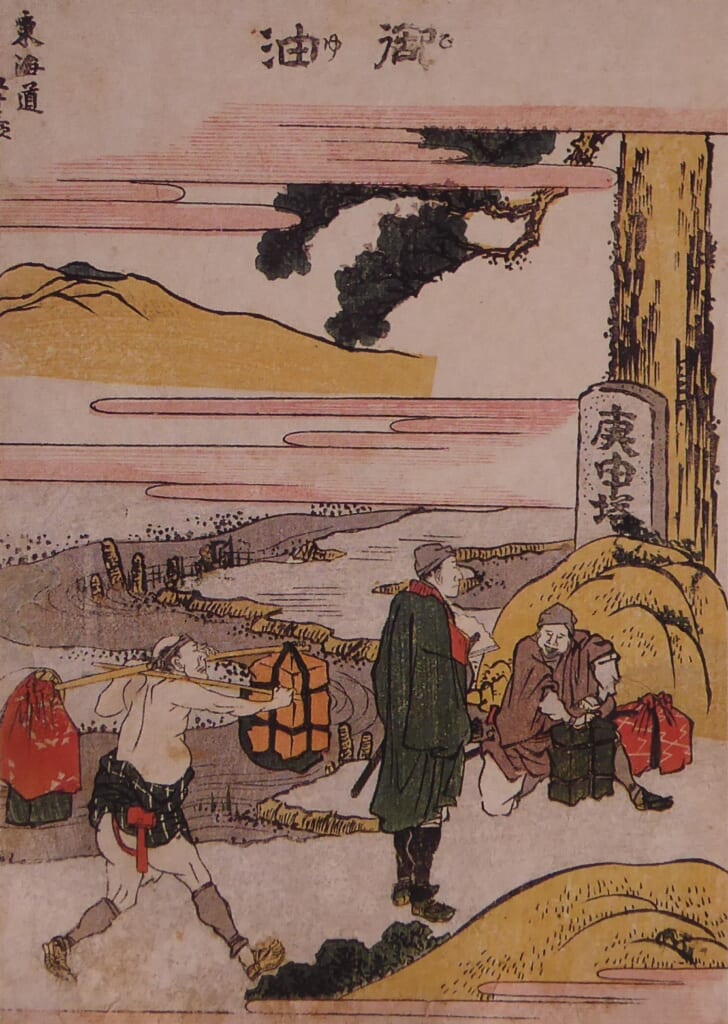
Travel Image
